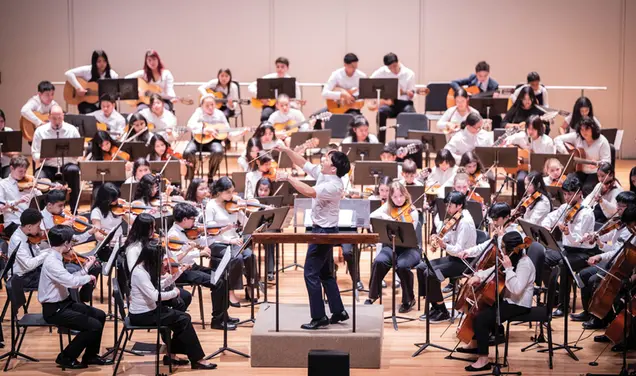A WWII Prisoner of Japan Tells His Story
Lt. Comdr. Greey (1920), veteran of Wake, tells the story of his experiences
Editor’s note: This story from 1945 contains dated language and ideas that are no longer used today. In the interest of keeping a historical record, it appears here as it was originally published.
On the afternoon of August 14, Lt. Col. James P. S. Devereux, who had been commander of the Marine detachment on Wake Island, and Lt. Comdr. Elmer B. Greey ’20 (CEC) USNR, also a veteran of Wake, where he was in charge of the contract for the naval base, were leading a work detail back from a day of gardening to their prison quarters at Nishiashibetsu on Hokkadio, an island just north of the Japanese home island of Honshu. As they marched along they met two British soldiers from a nearby camp for enlisted men. Said one of the Tommies: “We’re having a bowl of caviar tonight.”
Prisoners of war are accustomed to turning any statement upside down and inside out to shake out, if possible, a second meaning. Back in camp they found that a similar occurrence had happened that morning which illuminated the caviar announcement: Another British private had said, as he passed an officer, “Sir, Joe is in.” The interpretation came quickly and correctly: Russia had entered the war.
Thereafter, according to Lt. Comdr. Greey who returned to his Princeton home on September 24, much of significance occurred. A stolen Japanese paper of August 15 confirmed the Russian declaration of war. The demeanor of guards became subdued; they brought in a radio they had purloined from the nearby mining village. The word was passed that there would be no more work details for officers. At this juncture the prisoners figured either that the war was over or that the invasion was on.
But the next afternoon they learned what was what. One of the friendlier guards, protesting all the time that he was not permitted to tell anything, informed them that Truman, Churchill, Stalin and Hirohito were on the air, that the people were all happy in New York, London and Moscow where big celebrations were going on. Everybody, he said, ingratiatingly, was friends once more.
On August 16, all prisoners were permitted three cigarettes instead of two, including the sick who normally were allowed none; and black-out precautions were suspended.
On August 17, no alert was sounded despite the presence of a United States plane overhead.
On August 18, the executive officers of the prisoners conferred for three hours with the camp commander who told them the war was over. Prisoners received five cigarettes and a wider variety of food, including carrots, curry and potatoes; and personal property, including money seized for “safe-keeping,” was returned.
On August 22, more food appeared, including one-half pound of sugar a man.
On August 23, part of the Red Cross supplies, long withheld, was distributed, and the prisoners had soap, tooth powder and razor blades.
On August 24, there were ten cigarettes and cooking oil. Word came that planes would drop supplies. And a Japanese colonel who professed to a humane record for treatment of prisoners assumed command of the camp in the northern area, while his ruthless predecessor dropped from sight.
On August 26, planes were heard above a 400-foot ceiling. Suddenly through a blue hole in the overcast down the valley a Navy fighter appeared. It took a look around and then summoned down from the murk its companions, four Navy dive bombers — much to the chagrin of Army aviators in the camp who had been boasting that their branch of the service would be the first to arrive. From a heigh of 150 feet, the Navy bombers dropped sea bags to the various camps in the valley — seabags containing medical supplies, newspapers, magazines, books, cigarettes, chewing gum and K-rations.
Army planes came in on August 28 with more supplies, but meanwhile the Japanese were deluging the prisoners with food and necessities: salt, butter and soap. By early September, the prisoners were wandering about freely, unhampered by the Japanese, except for the children who kept pestering them for chewing gum. On September 10 they learned they would leave soon. At dawn the following day the relief party, in the form of a United States Army and an Australian officer who arrived ignominiously on foot when their transportation broke down, came and hat night the prisoners arrived at the Chitose naval base. From here they were flown to Yokohama and the homeward journey began — to Iwo Jima, Guam, Kwajalein, Pearl Harbor, Oakland.
While there were stop-overs en route, for rest and medical attention — it was fifteen days before Lt. Comdr. Greey, for the first time in nearly four and a half years, drove into the lane leading to his residence in the country, four miles north of Princeton — the elapsed time for the flight was 66 hours and 33 minutes.
Three and three-quarters of those four and a half years provided for Lt. Comdr. Greey an experience, as he put it, which “I would not wish upon my worst enemy.” “And we,” he added, “by no means had the worst of the prison experience.”
In civilian life, a vice-president and chief engineer of the Matthews Construction Company, of Princeton, builder of many of the University buildings, and recorder of Princeton Township, Lt. Comdr. Greey was called to active duty in the Naval Reserve in May, 1941. In October of that year he and his three junior officers were ordered to Wake to supervise construction of the base there.
Following the dramatic fall of Wake, all military personnel and some 700 of the civilian construction workers were herded aboard the Japanese luxury liner, “Nita Maru” — the officers in the mail room and the enlisted men in the hold. Their daily ration was two cups of rice gruel with, sometimes, a “ripe” sardine or a pickled radish as a garnish. Seven days later, on January 19, the ship reached Yokohama. After a two-day lay-over it proceeded to Shanghai where it arrived on January 23 and was ostentatiously berthed astern the “President Harrison.” In what the Japanese thought was an appropriate gesture, the captured skipper of the USS “Wake,” a river patrol craft, was paraded before the prisoners and he and his crew were taken aboard. The “Nita Maru” then went down the river to Woosung where the prisoners disembarked and marched to a camp.
They remained here until December 7, 1942, when they were moved fifteen miles to Kuan Wang where they were to remain for two and a half years.
The camp at Kuan Wang had, at its peak, about 1,600 prisoners, principally American and British. Its three acres wre surrounded by an eight-foot brick wall surmounted by electrified wires. In the compound were six barracks, each about 220 by 42 feet, an administration building, a cook house and shacks for a medical center and recreation.
During most of 1943, Lt. Cmdr. Greey superintended enlisted men who were put to work constructing a rifle range. The following year he worked on the 15-acre garden which officers planted and tended outside the camp, the produce from which was used by the prisoners and their guards.
The regular Japanese issue of food was one “ersatz” loaf of bread and 450 grams of rice a day. To this prisoners added whatever local vegetables could be procured. The balance between malnutrition and outright starvation was thrown in favor of the former by the International Red Cross shipments of local food products which came in at two week intervals.
The food situation improved somewhat as time went on. About the middle of 1943, the prisoners assumed control of the galley and in the spring of 1944 they built their own bake over which produced better bread than the Japanese had made.
Although under rigorous supervision, the prisoners kept abreast of what was going on. The Japanese, of course, told them freely of their successes during the dark, early days of the war — and of President Roosevelt’s death. But they got good news, too, when the good news started, through secret radio receivers, cleverly constructed and cleverly hidden, through stolen Japanese papers, through the conversations of the guards. They knew of the slow advances in the Pacific, of the invasion of Europe, of the end of the German war. And last spring they figured out, from the way things were going, that they would be out of captivity by Christmas, 1945. Earlier, their two extremes of thought were represented by the slogans, “Back Alive in ’45” and “Golden Gate in ’48.”
As early as the summer of 1943 they noticed an encouraging change in the attitude of the common Japanese soldier, who began to ask questions about American soldiers and their treatment of a surrendered enemy. “The cleavage between the Japanese soldiers and officers is great at any time,” Lt. Comdr. Greey said. “As the war went against them it became greater and some of us would not have been surprised if there had been mutiny had the war continued much longer.”
The move to Japan began on May 9, 1945. The transfer was apparently effected to prevent their recapture, but Lt. Comdr. Greey pointed out that the shifting around of prisoners seemed to be a characteristic of the break-up of a nation. It happened in Germany, he noted, in the chaotic days of 1918 and 1945.
The journey was interrupted by a five-week stay near Peking and then the trip in box cars began again through Manchuria and Korea. Then by ship to Honshu and by stages, by rail again along the Inland Sea, and finally to Tokyo.
Although they were jammed into cars, hungry and uncomfortable, this portion of the trip was by no means unsatisfying to the prisoners. The shades of the cars were drawn and prisoners were forbidden to look out of the windows, but they knew, as prisoners have a way of knowing, what the scene outside looked like. As they moved through Nagoya and on to Tokyo, they knew that the cities were rubble, even the chimneys pared down to stumps, and the drawn blinds could not exclude the stench of death which hung in the air.
During the transfer from one station to another in Tokyo, part of the group was stoned by a mob led by women — in the mistaken belief, it was surmised that the invasion of Japan had begun. From Tokyo they went to northern Honshu and then by boat to Hakodate, by rail to Takagawa and thence twenty miles farther to the camp at Nishiashibetsu. On the latter stages 170 prisoners were jammed in a day coach built from 88 persons. Their rations were rice and fried grasshoppers.
At the officers camp they found forty-five Australian officers from Rabaul. Their own group consisted of thirty-five United States officers, mostly Marines, and eight or nine aviators. They were housed in a single barracks, about 125 feet by 36 feet — alive with fleas. Inside was a central dirt aisle, flanked by a platform on each side. On these they slept, each man being allotted about two and a half feet by seven. Sanitary conditions were dreadful.
The entrance to the barracks was a large vestibule and this was the scene of a typical example of Japanese double-dealing. The camp commander received word, after the cessation of hostilities, that representatives of the International Red Cross were to make a visit. The Japanese medical corporal who had appropriated all medical supplies which the prisoners had managed to bring with them from China raided the village for instruments and equipment, erected a medicine cabinet and hastily transformed the vestibule into a semblance of a first-aid room.
Here the International Red Cross delegation which included the Swedish consul were entertained. The prisoners added their bit to the mockery by apologizing for coming through what was obviously the only entrance and wondering aloud whether this was, after all, their regular door. “It certainly did not look like this yesterday,” they would add in bewilderment.
Food was rice, plus whatever vegetables they could forage — mainly fuki, a type of wild rhubarb, which they cooked as a soup with an occasional horse bone thrown in. There were sometimes pickled squids. And the prisoners were permitted to buy dry squid — a source of protein, even though Lt. Comdr. Greey, making a wry face, termed it “fertilizer.”
The community nearby was a poverty-stricken coal-mining village. Enlisted men from four or five adjoining camps were forced to work in the mines on twelve and fourteen hour shifts. The shoring and equipment of the mines were poor and there were casualties among these prisoners.
Officers had been engaged in clearing a space for a garden, but on August 4 orders were received that thereafter they were to be put at heavier work. They were started on unloading mine shorings and heavier timbers and gravel from freight cars and undoubtedly would have eventually been ordered into the mines if the war had continued.
Commander Greey lost thirty-odd pounds during his confinement, but he had gained twenty of them back by the time he reached his family — or that portion of it which was home. Barbara, second oldest of his five children, is a WAC at Fort Belvoir and Elmer Jr. is at Admiral Billard Academy in New London. Lt. Comdr. Greey’s brother, Edward A. Greey (1924), is also a lieutenant commander, stationed in Washington.
Communication between Lt. Comdr. Greey and his family was infrequent. Three letters from Mrs. Greey got through to him — in July 1942, November 1943 and December 1944. Mrs. Greey heard from her husband five times — the most recent, prior to his return, in the late summer of 1944. Letters took about nine months in transit. One, in fact, which he had written on January 3, 1945, reached home after he did. Mrs. Greey had word of mouth information about her husband from a repatriate in the summer of 1942 and from an escaped prisoner during the past summer.
Lt. Comdr. Greey views the Japanese problem with extraordinary objectivity. “In our dealings with the Japanese,” he said, “the one important thing to remember is that the Japanese have lived for centuries in a permissive form of society whereas we are accustomed to a restrictive form. This is very difficult to learn — it took us a long while to learn it and until we did we were handicapped in our dealings with the Japanese and our understanding of them. The Japanese are told what to do; we tell ourselves, through our laws, what not to do, in the interest of the social good and for the protection of the individual’s rights. From the Ten Commandments on down, our conduct is governed by ‘shall not’; the daily existence of the Japanese is based on ‘shall.’
“As a result, the Japanese masses are undeveloped and really are at the level of immature children. By our code of ethics, they are not so much immoral as unmoral.”
Lt. Comdr. Greey said that any attempt to impose Occidental methods of education on the Japanese would be a mistake. The prisoners had their worst experiences with Japanese who had been educated in Japan by western methods, he indicated, by way of illustration. Japan, he added, is a uniform ridden country and the uniform and all it stands for will have to go before reformation of the nation can begin.
But Lt. Comdr. Greey has had his fill of seeing and talking about Japan. “What’s new?” was his first question to a friend who called upon him. When the latter haltingly declared that nothing much was new except maybe the paving of Nassau Street, Commander Greey offered the suggestion that the Radio Corporation of America Laboratory had been comleted and that there was a new penicillin plant at Penns Neck. It was then that the friend realized how long four and a half years, even under the best of circumstances, really is.
This was originally published in the October 19, 1945 issue of PAW.










No responses yet